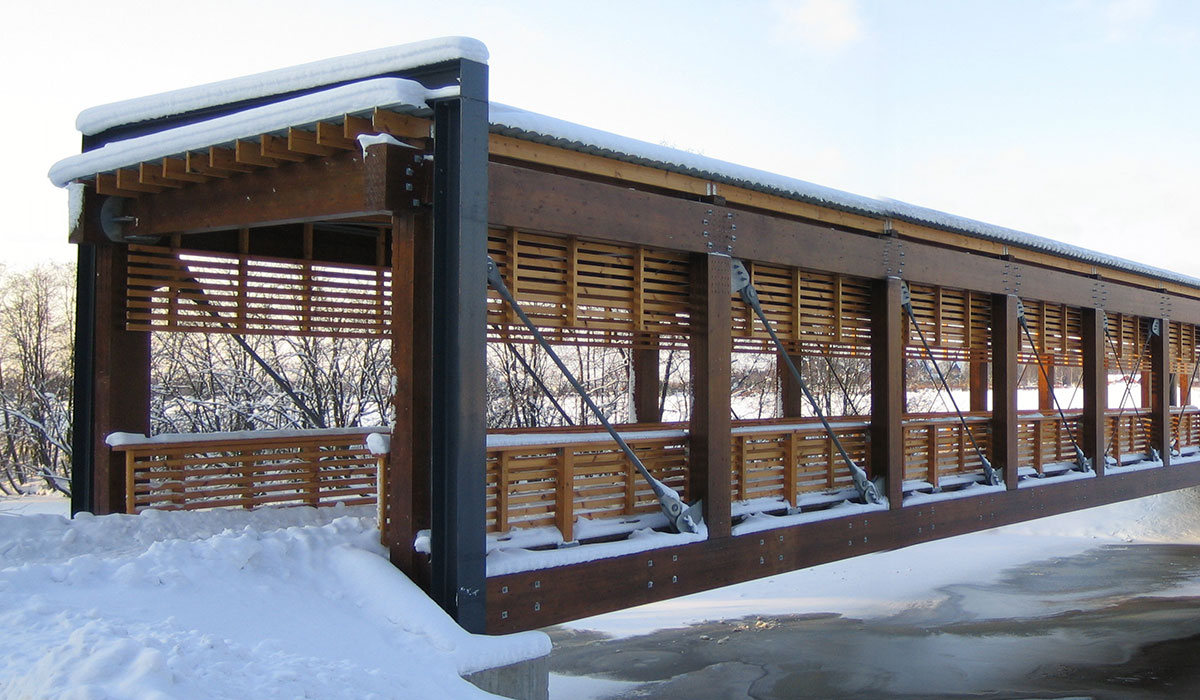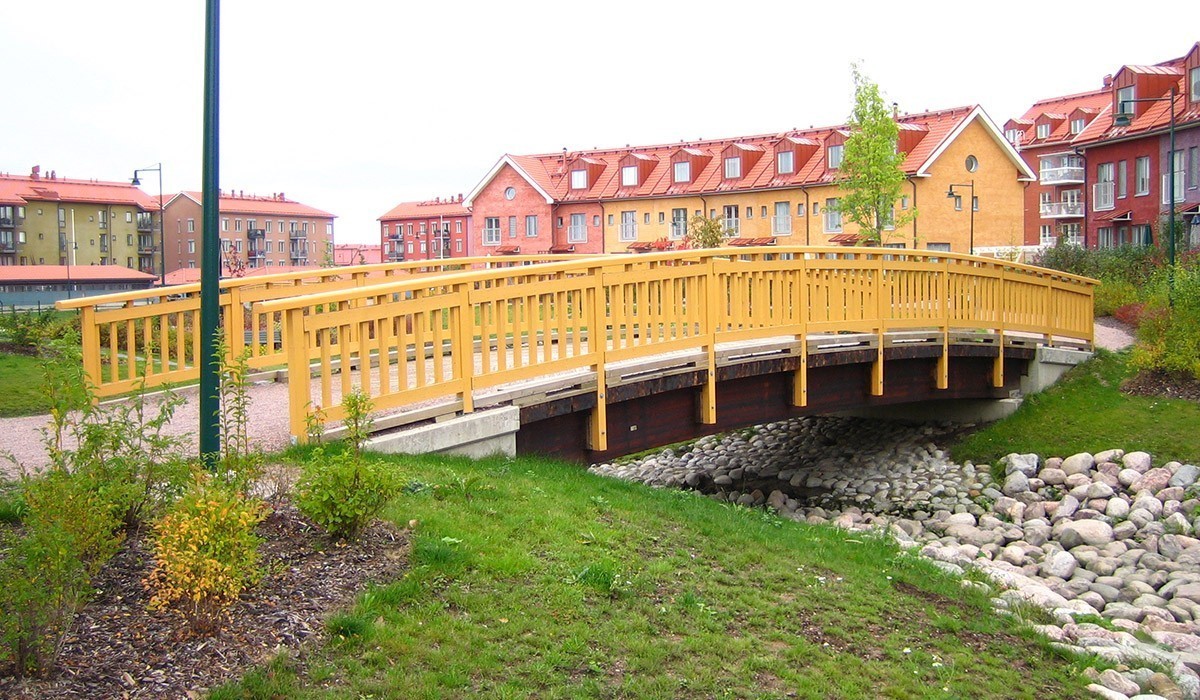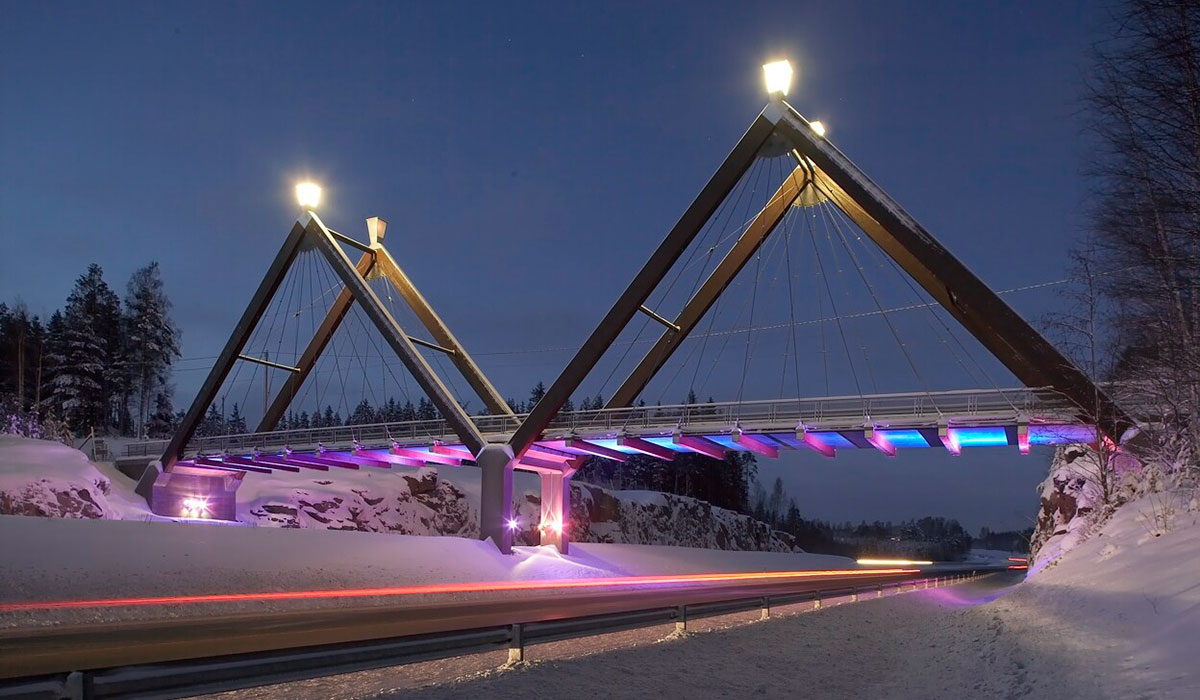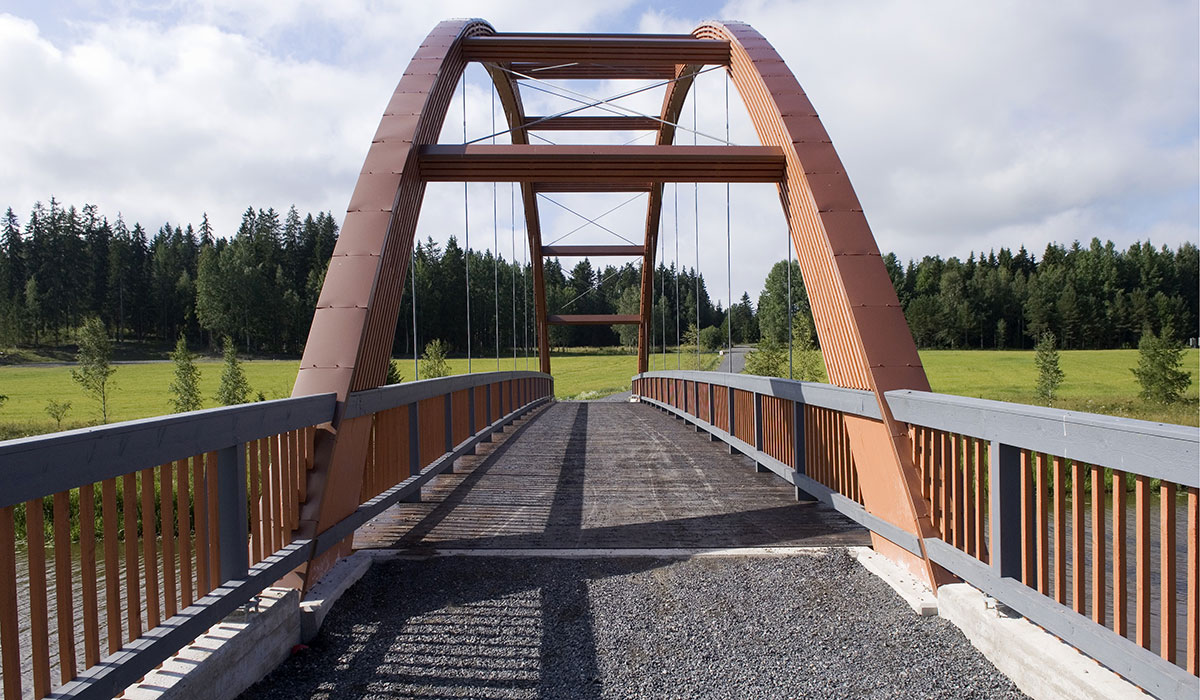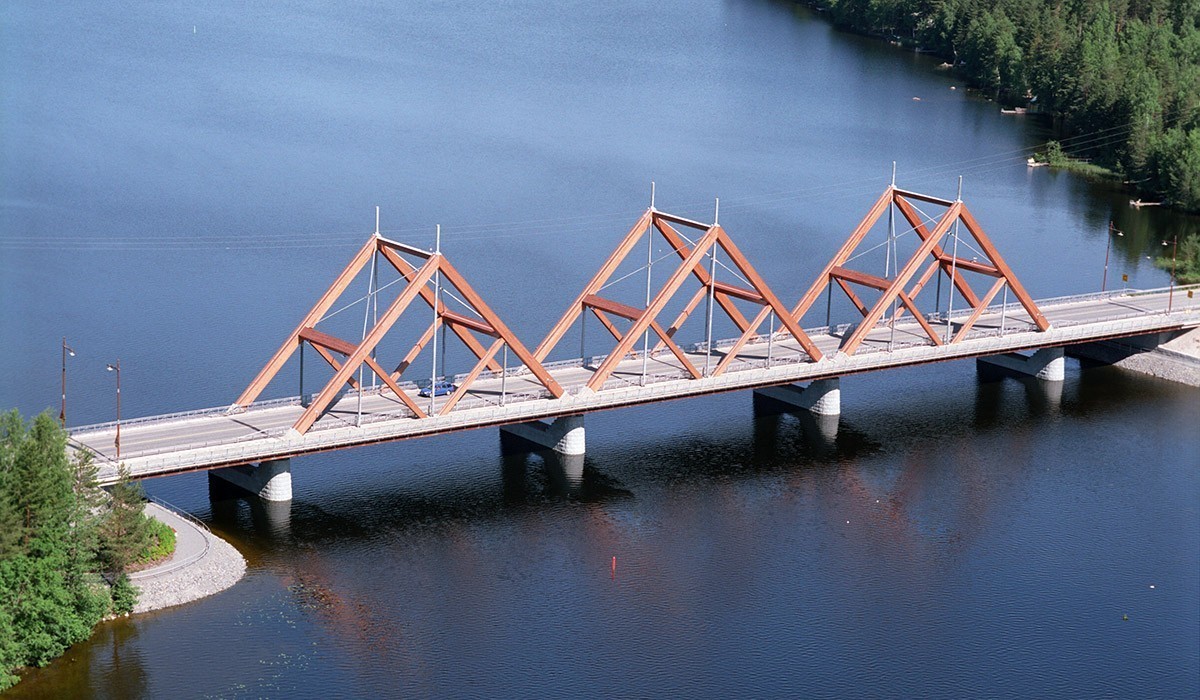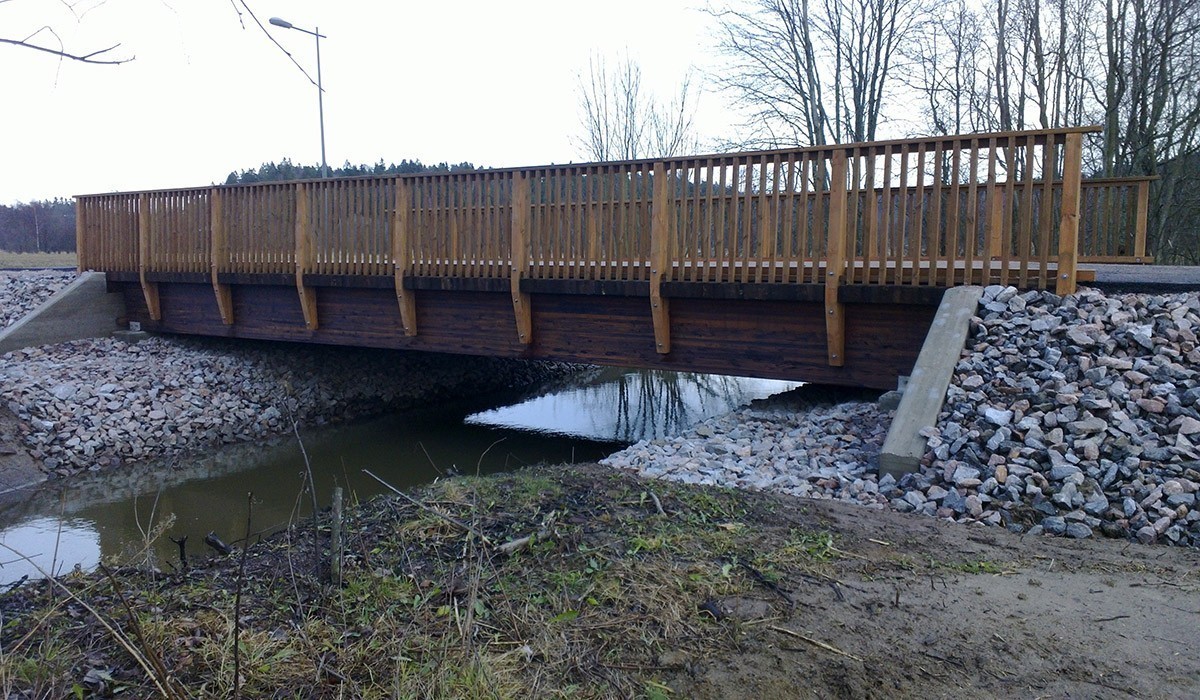Wooden bridges are an environmentally friendly and aesthetically pleasing solution
For nearly 30 years, we have produced a variety of wood bridges to meet the needs of our customers. Our high-quality products and advocacy for wooden bridges have led to an increased appreciation of wooden bridge construction. Over the decades, gluing technology has evolved and new structural solutions have been introduced to wood bridges. Due to their longevity and high quality, wooden bridges are an attractive and cost-effective alternative to steel and concrete bridges. Wood produces aesthetic bridge solutions that blend in well with their environment.
Wooden bridges are a cost-effective and durable alternative to concrete bridges
Because they are lightweight, wooden bridges do not require massive foundations. Despite this, they still have a very high load-bearing capacity and are suitable even for heavy-duty transport. Versowood’s bridges are made of Finnish class A pressure-saturated glulam and sawn timber.
Wooden bridge construction
We supply ready-made bridges or individual bridge elements according to the customer’s requirements. Our bridges or bridge elements are delivered to the agreed degree of completion, and in accordance with the customer's drawings and specifications. In many cases, a local construction contractor prepares the foundations, and we then install our own wooden bridge. With our extensive expertise, when required we will also take full responsibility for the design, construction, and installation of wood bridges. Wood bridges of up to 30 metres in length can be completely prepared in our factory, and installed in its entirety in a single working day.
Various possibilities for wooden bridge construction
The most commonly used structure in wooden bridges. The load-bearing structure is made up of longitudinally sawn timber, glulam beams, and deck beam superstructural sawn timber or glulam elements. The most economical range of use for a bridge structure is 4–20 m for bridges carrying motorised vehicles, and spans of between 3–30 m for light traffic. Timber joist bridges are a traditional type of wooden bridge in which the bearing structure consists of longitudinal glulam beams combined with a superstructural element. Timber joist bridges can also be easily built as arched bridges. These wood bridges are suitable for short and medium spans (10–25 m), for carrying motorised vehicles and light traffic.
Truss bridges were a very commonly used structure for wooden bridges before glulam began to be used. Nowadays, truss bridges are mainly used in museum structures and for specialised purposes. Due to their transverse stiffness, truss-framed bridges are best suited for relatively narrow bridges with a length of 15–50 m. Trussed bridges are visually attractive structures for long spans (more than 25 m), and function effectively as supports for superstructures. These bridges are suitable for light traffic and motorised vehicle traffic.
The bearing structure of arch bridges is a glulam that is glued into the form of an arch. The span of arch bridges can be as much as 100 metres. Arch bridges are a visually appealing type of bridge for long spans (over 25 m), and due to their good load-bearing properties function effectively as supports for superstructures. These wooden bridges are suitable for light traffic and motorised vehicle traffic.
The arch of arched bridges can be:
a) completely under the superstructure, in which case there can be several arches;
(b) cut across the line of the superstructure at any point;
(c) completely above the superstructural element.
The state of the art in wood bridge construction is represented by wood and concrete composite structure bridges, in which wooden beams and concrete slabs are joined together into a functional whole. Composite structure bridges and web truss bridges are suitable for extremely long spans (over 40 m) and demanding use. These construction types have a large load-bearing capacity.
Versowood’s type-approved bridges are pre-stressed with the aid of drawbars. These types of bridges are called transverse pre-stressed bridges. The basic type is a slab in which the longitudinal planks or glulam beams of the wood bridge are compressed by transverse drilled steel bars into a single slab. The range of use of such a slabbed bridge is for spans of between 3 m to 36 m. Versowood has developed from this basic structure a grid-type superstructural element by combining glued beams and sawn timber. This increases the economical range of use of the resulting structure to a span of 30 m.
Covered wooden bridges are usually grid-like (webbed) bridges, with the carriageway being supported by the lower part of the webbed structure and the covering supported by the upper part. Covered wood bridges are particularly well suited for light traffic use.
Type-approved bridges
The Finnish Transport Infrastructure Agency has approved our supplier-specific type bridges for use on the roads of the Finnish Transport Infrastructure Agency.
Versowood’s type-approved wooden bridges are suitable as general bridges and as state-subsidised private road bridges. The bridges are designed to be cross-tensioned in accordance with the Eurocodes.

